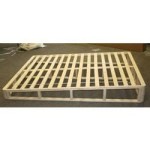Should Your Nightstand Be the Same Height as Your Bed?
The perfect bedroom design is often a balancing act between functionality and aesthetics. One specific element that contributes significantly to both these aspects is the nightstand. It serves as a practical surface for essentials like books, lamps, and glasses of water, while also acting as a decorative element that adds to the overall charm of the space. A question that frequently arises in this regard is whether the nightstand should be the same height as the bed. While there's no definitive answer, understanding the pros and cons of each approach can help you make an informed decision.
The Case for Matching Heights
Advocates for matching the nightstand height to the bed cite several benefits. Primarily, it creates a sense of visual balance and harmony. The seamless transition from the bed surface to the nightstand creates a visually pleasing flow, enhancing the overall aesthetic appeal of the room. This approach also promotes a sense of order and tidiness, eliminating any visual disruption that could arise from a height difference.
Moreover, a matched height allows for a more comfortable and user-friendly experience. It eliminates the need to reach up or down when accessing items on the nightstand, particularly beneficial for individuals with limited mobility. This convenience contributes to a more restful and enjoyable sleep environment.
The Advantages of Varying Heights
Despite the appeal of matching heights, opting for a nightstand that is slightly taller or shorter than the bed has its own set of advantages. A taller nightstand, for instance, can create a sense of grandeur and sophistication. It can also serve as a visual focal point, drawing attention to the bed and highlighting its presence within the room. Additionally, a taller nightstand can accommodate larger lamps or decorative elements, adding a touch of personality and opulence.
In contrast, a shorter nightstand can create a more intimate and cozy atmosphere. It can also add a touch of visual interest and break up the monotony of a straight line, offering a more dynamic aesthetic. Shorter nightstands can also be more practical in smaller bedrooms, minimizing the visual footprint and creating a sense of spaciousness.
Factors to Consider
The ultimate decision on the best nightstand height for your bedroom should be based on several factors. These include the design and height of the bed itself, the overall aesthetic of the room, and your personal preferences. If you have a particularly high bed, a matched height might be too cumbersome, while a low bed could benefit from a taller nightstand to provide adequate surface area.
The style of the nightstand also plays a role. A sleek modern nightstand might look better at a matching height with a contemporary bed frame. A more ornate, traditional nightstand might look better slightly taller to add a touch of elegance. Ultimately, the best approach is to experiment and see what works best for you and your space.

Nightstand Dimensions 5 Tips For Choosing The Right

Should Nightstands Be Higher The Same Height Or Lower Than Beds

How To Choose The Ideal Nightstand Bedside Table Linenme

How To Choose The Ideal Nightstand Bedside Table Linenme

How To Match A Bed And Bedside Tables Top 10 Design Tricks

Simple 6 Step Formula For Decorating Any Nightstand Bonus Styling Tips Anderson Grant

Nightstand Dimensions 5 Tips For Choosing The Right

A Professional Guide What Is The Best Bedside Table For Your Project Laskasas

Our Ultimate Guide To Bedside Table Sizes

Adding Height To A Nightstand







